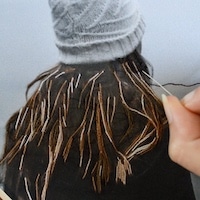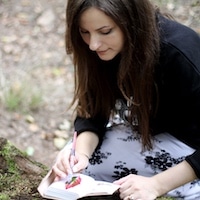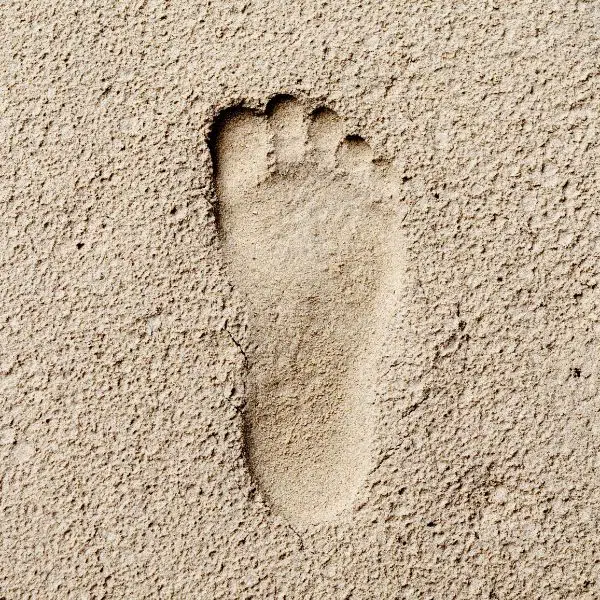
The excavation site in Rechnitz, Austria, as seen from above.
Several years ago, between 2011 and 2017, archeologists discovered something unexpected in Rechnitz, a small town nestled in Burgenland, Austria’s easternmost and least populous state. Aerial and geomagnetic surveys from the time revealed a series of concentric circles carved deep beneath the grass, raising questions about their origins. In September 2025, researchers finally completed their excavation of the site, unveiling monumental earthworks that are nearly 2,000 years older than the Pyramids of Giza and Stonehenge.
Dating back to the Neolithic era, three of the four newly-discovered, ring-shaped structures have been identified as “circular ditch systems,” built between 4850 and 4500 B.C.E. These three enclosures measure up to 105 meters in diameter (about 344 feet), and were once bordered by wooden posts, as evidenced by holes left behind at the site. Such ditch systems often incorporated wooden stakes and up to five concentric rings in their layouts. More than 120 systems have been discovered so far across Central Europe, per Burgenland Archaeology, but their historical purpose remains shrouded in mystery.
What distinguishes these earthworks from those unearthed previously is not only their volume, but their proximity to one another, according to Nikolaus Franz, the director of Burgenland Archaeology.
“The existence of three of these monumental constructions in immediate proximity to one another makes it possible to classify the Rechnitz discovery site as a supraregional center during the Middle Neolithic period,” Franz explained in a statement. “We are learning a great deal about the clans of Neolithic settlers who found here a favorable place to establish the cultural techniques of farming and animal husbandry in what is now Austrian territory during the 6th millennium B.C.E.”
Also left behind at the site were ceramic artifacts and the ruins of two nearby settlements dating to the Early Neolithic era, suggesting that Rechnitz could truly have served as a central hub throughout the region. After all, this time period, which is also known as the Neolithic Revolution, witnessed a tremendous transformation of human life. Hunter-gatherer groups were increasingly transitioning from nomadic to stationary societies, focusing more on agricultural practices, the domestication of plants, and animal husbandry. Given these developments, humans could dedicate more time to economic, political, religious, artistic, and architectural pursuits, rather than simply locating food and resources.
Now that the excavations are complete, Burgenland Archeology is currently converting the site into an archeological park with a visitors’ center. The team has also planted crops similar to those from the Stone Age, such as barley, flax, and nettle, offering a more immersive experience.
“The excavations represent the final necessary step before construction work can begin,” Hans Peter Doskozil, Burgenland’s governor and cultural affairs officer, said. “I’m extremely pleased that an archeological visitors’ center is being built in Rechnitz, which will not only provide key historical insights into our state, but also serve as a recreational area for the local population and boost cultural tourism.”
Burgenland Archeology is continuing its research into the Rechnitz site, having sent soil samples to the University of Vienna for further analysis. The team hopes that the analysis will yield new details about the era’s farming techniques and ancient diets.
Archeologists have discovered monumental, concentric earthworks in Rechnitz, Austria, dating back to the Neolithic era.

The excavation site in Rechnitz, Austria, as seen from above.

Researchers with Burgenland Archaeology manually plastering the excavation site.
These structures were most likely built between 4850 and 4500 B.C.E., making them more than 2,000 years older than Stonehenge and the Pyramids of Giza.

Burgenland officials gather at the kick-off event for the Rechnitz excavation in September of last year.
All images via Burgenland Archeology’s press office.
Sources: Archaeologists Discover Mysterious Earthwork Circles Built 6,500 Years Ago—Nearly 2,000 Years Before Stonehenge; An Extraordinary Complex of Concentric Circular Ditch Enclosures from 6,500 Years Ago Discovered in Austria; Window into the Stone Age: Excavations in Rechnitz provide new insights into the Neolithic settlement of southern Burgenland
Related Articles:
Researchers Examine Centuries-Old Flip-Flop Sandals on an Ancient Roman Mosaic
Ancient Relics Recovered From a Long-Gone Sunken City off the Egyptian Coast
4,000-Year-Old Handprint Discovered on Ancient Egyptian Clay Artifact






















































































